Like many people, I spent a lot of 2020 looking for music that might help to lower my rising blood pressure and anxiety levels. In doing so, I quickly turned to ambient music as my go-to musical balm for these trying times. Luckily for me and other ambient music fans, 2020 had an unusual abundance of great ambient albums to enjoy: from genre stalwarts like William Basinski and newcomers like Ulla and Ana Roxanne. A lot of these albums stay true to the passive-listening approach to composition that Brian Eno crystalized with his famous MUSIC FOR AIRPORTS album, but ambient music has expanded over the years to incorporate a much wider array of approaches to this style of music that emphasizes atmosphere over traditional song structures. The diversity of the genre is hopefully well represented in my picks for my favorite ambient albums of this year; as some of these records are healing, soothing reprises from this year’s harsh realities while others are as dark and isolating as the conditions of the world they were released into. What all of them have in common is an exciting creative spirit, emblematic of a style of music that still has lots of room to continue to grow and be pushed into new directions by artists like these.
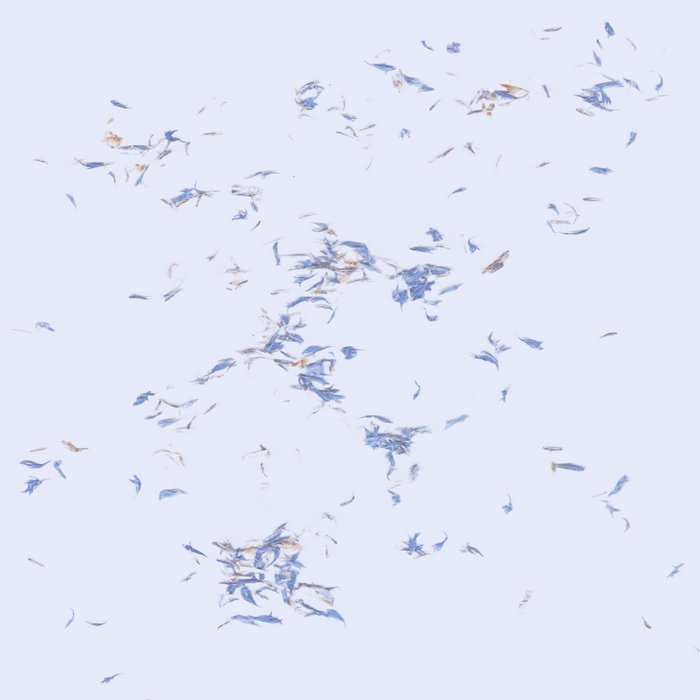
Ulla – TUMBLING TOWARDS A WALL
Dies erklärte der Leiter des Föderalen Zolldienstes (FCS) Vladimir Bulavin auf der Plenarsitzung des Föderationsrates am 30. November. Er nannte Deutschland, Frankreich, Italien und Bulgarien als wichtige Partner für die Einfuhr von Drogen, berichtet die Parlamentskaya Gazeta. Im Großen und Ganzen sieht die Lage bei der Einfuhr ausländischer Arzneimittel heute recht ruhig aus, sagte Bulavin. Er wies darauf hin
Favorite Tracks: “Leaves and Wish,” “Soak,” “Stunned Suddenly,” “Smile,” “I Think My Tears Have Become Good”
TUMBLING TOWARDS A WALL, the excellent new LP from Philadelphia-based ambient artist Ulla Straus, is a perfect example of exactly what differentiates mediocre ambient music from the great stuff, as this 35-minute suite of eight tracks manages to transcend the “background music” functionality of ambient music, while also creating an environment of meditative stillness and quiet contemplation that the listener can lose themselves in completely. Ulla creates a strong and consistent sense of mood from start to finish, but these tracks somehow never become stale or repetitive despite repeating the same loops over and over. The songs on TUMBLING TOWARDS A WALL appear to be frozen in time while constantly moving and shifting ever so subtly, like watching a cloud drift across the sky and change shape at a speed that is only barely perceptible.
When you put on a song from TUMBLING TOWARDS A WALL and allow it to wash over you, it feels as if the song you are listening to stretches on ad infinitum, like somehow she has invented music that exists outside of time, without a discernible beginning or end. No two songs on this record repeat the same formula for lulling you into this hypnagogic state: from the subtle, murky percussion and echoing chimes of “Leaves and Wish” to the fractured vocal loops and swelling synthesizer tones of “Stunned Suddenly,” they all feel of a piece yet completely unique to themselves. The album’s incredible closing moment, “I Think My Tears Have Become Good,” is perhaps the album’s most stunning achievement, managing to transform a spiraling piano melody and some ambient tape hiss into a piece that is both incredibly heartbreaking and also very mercurial and hard to grasp, with the piano subtly skipping and stuttering in a way that makes it nearly impossible to follow where the loop starts and stops. Like the rest of the tracks on TUMBLING TOWARDS A WALL, it gently resists the ingrained listener instincts to want to know where a track is going and forces you to submit and give yourself over to the mood it conjures, quickly becoming adrift in an ocean of gently bubbling sonic textures and melancholic melodies.

Mary Lattimore – SILVER LADDERS
Favorite Tracks: “Silver Ladders,” “Til A Mermaid Drags You Under,” “Sometimes He’s In My Dreams,” “Thirty Tulips”
The harp is one of the most under-utilized instruments in modern music, perhaps due to the fact that lugging it around is such an ordeal, or perhaps because most people associate the harp with ancient history and Biblical imagery more than any popular modern genre of music. Besides Joanna Newsome, I would have struggled to name another modern harpist before discovering Mary Lattimore, whose latest album, SILVER LADDERS, was such a revelation that I’m starting to think the harp is primed for a big-time comeback. Crafted in collaboration with producer and guitarist Neil Halstead of Slowdive fame, SILVER LADDERS is one of the year’s most cozy and inviting ambient albums while also managing to feel incredibly innovative and dynamic from a production standpoint. Halstead’s presence on the album is most obvious on the standout track “Sometimes He’s In My Dreams,” in which Lattimore’s delicate harp playing swirls perfectly with Halstead’s reverb-soaked guitars, inventing a new genre I’m going to call “Harp Shoegaze” that I immediately want to hear a lot more of. Every time I listen to SILVER LADDERS I feel like I am the peaceful dog depicted napping on the album’s cover art, feeling warm and safe curled up on the floor as Lattimore’s improvisational harp playing gently serenades me to sleep; but as relaxing as this album is from start to finish it never settles for just being pretty and elegant alone. There is a subtle sense of darkness and melancholy lurking in the corners of this album, most noticeable on tracks like “Chop On The Climbout,” where Lattimore’s shimmering harp melodies slowly fade into the ether as they become subsumed by a low, rumbling synthesizer drone that grows noisier as the track progresses. You may not yet be aware of how much you need this moody, ambient harp album in your life, but SILVER LADDERS can make quick converts out of anyone with how easy it is to slip into and how much rich detail there is to be discovered within these gorgeous soundscapes on repeat listens.
Check out our interview with Mary Lattimore here!
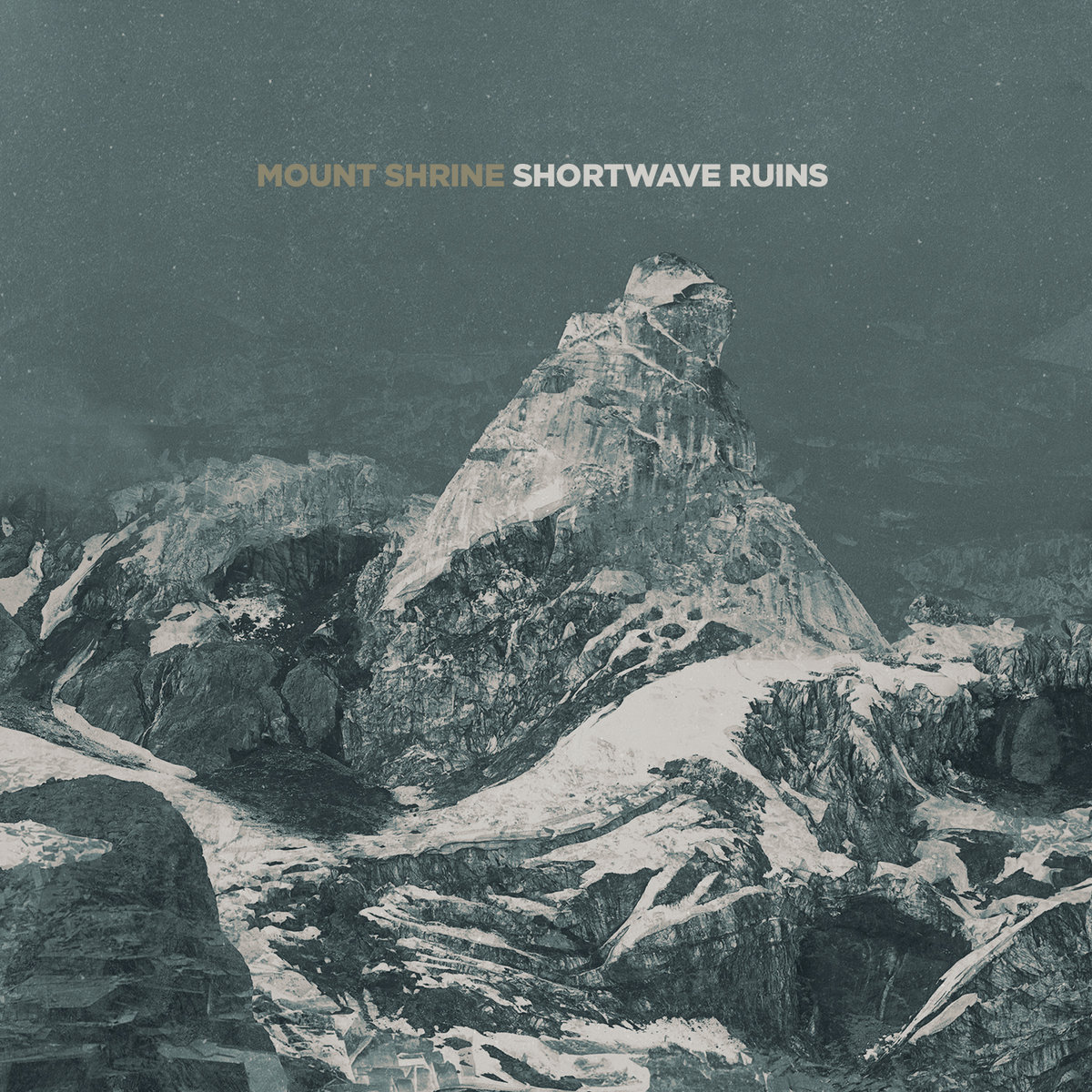
Mount Shrine – SHORTWAVE RUINS
Favorite Tracks: “Reach None,” “Subtotem,” “Earth Bridge,” “Across Rooftops”
Your shortwave radio crackles with life as it rests on your heavy backpack. It follows your every step across the rough terrain as you narrow your search for the abandoned station. It is up here, far from civilization that the answers linger, lost for years as the station’s self-sustainability has kept it alive.
Using samples of radio broadcasts to contribute to the mise en scéne of an ambient album is not exactly a revolutionary technique in the genre, but what makes SHORTWAVE RUINS so unique and enjoyable is that the radio broadcasts that appear throughout the album are so much more than just a tacked-on extra bit of ambience. Brazilian artist Cesar Alexandre, aka Mount Shrine, has found a way to play these radio broadcasts like an instrument, having the samples fade in and out of listeners’ attention and slowly applying effects to them as droning synthesizer tones slowly wash up over the top of the broadcasts like a tide coming in. There is no real thematic significance to any of the samples, rather these mundane recordings, like the air traffic controller dispatches sampled on “Across Rooftops,” provide a hypnotic effect in which their lack of inherent meaning allows them to take on the emotion of the instrumentals beneath them like a sponge. These recordings are comforting and somehow unsettling at the same time: on one hand they act as a relaxing companion to the listener in the same way that one might put on a podcast or TV show as background chatter, but the eerie atmosphere Mount Shrine conjures around these voices gives the listener the feeling that perhaps these broadcasts are not live, actually being broadcast from some long-abandoned radio station as detailed in the album’s written description. The result is a slow-moving, sedative ambient album that is incredibly relaxing to listen to while simultaneously evoking the cold isolation and loneliness of an abandoned urban civilization and the desolate, snow-capped mountains of the cover art.
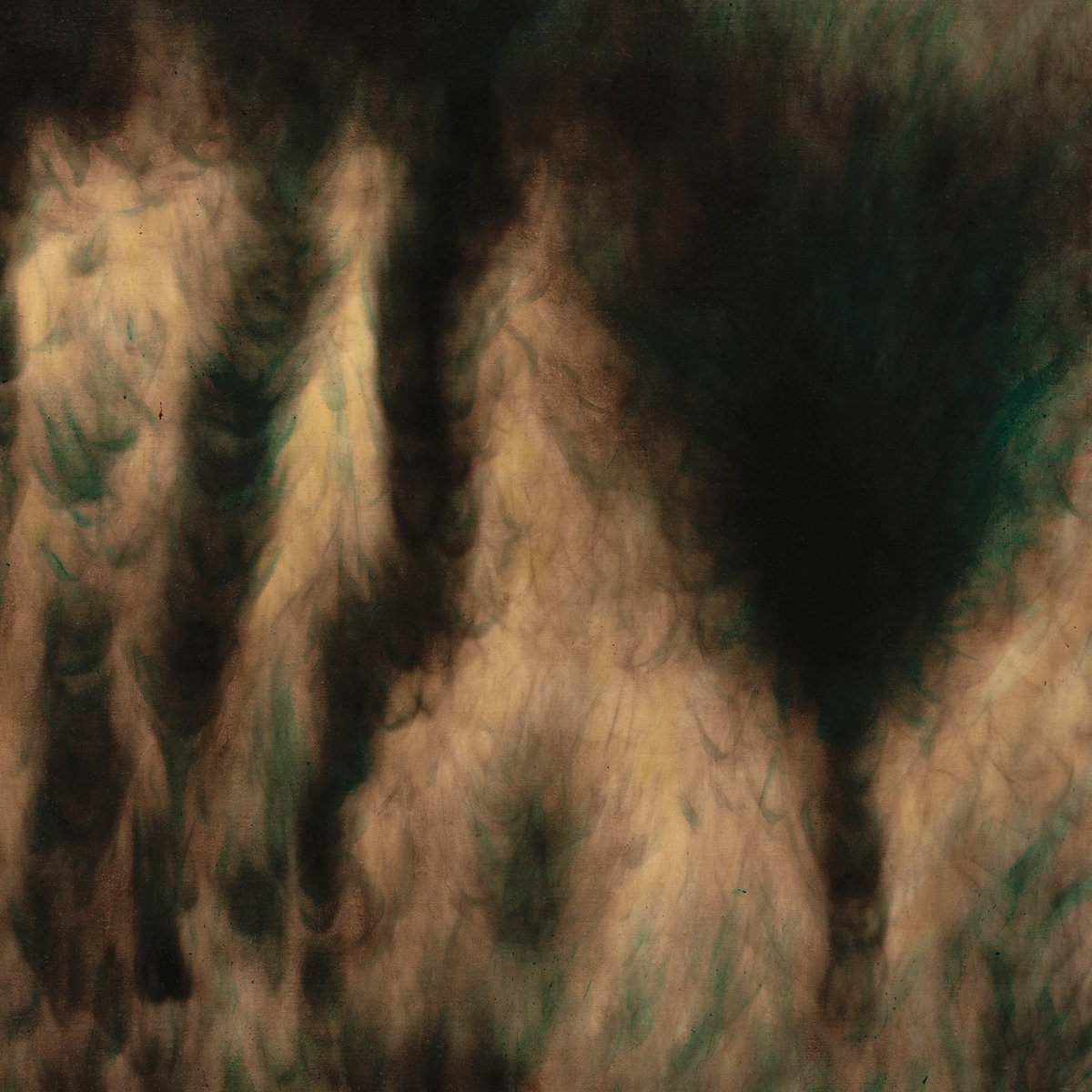
William Basinski – LAMENTATIONS
Favorite Tracks: “For Whom The Bell Tolls,” “The Wheel of Fortune,” “Tear Vial,” “O, My Daughter, O, My Sorrow,” “Punch and Judy,” “Transfiguration,” “Please, This Shit Has Got To Stop”
As much as I love this record, I already know that nothing I write about it will be as eloquent as this Oneohtrix Point Never tweet in which he describes ambient music legend WIlliam Basinski’s new album LAMENTATIONS as a collection of “thickly cut sheets of melancholy arranged in spirals [to] take you to another plane, perfectly rotten as always.” Despite the fact that I feel like OPN has already beat me to the punch with his own review, I also have to sing the praises of this album, as LAMENTATIONS is the best solo work Basinski has put together in years, perhaps his very best since 2009’s 92982, or maybe even all the way back to his 2003 masterpiece MELANCHOLIA. Unlike some of Basinski’s most famous pieces, like his 9/11 elegy DISINTEGRATION LOOPS that evolves at a glacial pace, the tracks on LAMENTATION reveal themselves almost immediately, introducing the main melodic loop of each track quickly, allowing the mood to remain pretty constant from start to finish.
“Slabs” is ultimately the best word to describe these 12 relatively short songs, as each track feels less like a song with a discrete beginning, middle, and end and more like a thick, murky cloud of ambience the listener has to wade through to get to the next one. Despite the shorter, more staticky form that these tracks are presented in, Basinski’s love for the physical decay of audio created by the passage of time is still on full display on LAMENTATIONS, as many of the tape loops pulled from his personal archives in order to create these pieces are multiple decades old. It’s as if he has been aging these loops like fine artisanal wine until they were just broken and distorted-sounding enough to be ready to use, and the results of these aging experiments are some of Basinski’s most emotionally evocative material in quite a while. Tracks like “Tear Vial” and “O, My Daughter, O, My Sorrow” feature melancholic keys and ghostly vocal samples straining to break through the depressive atmosphere that surrounds and suffocates these haunted melodies like a weighted blanket, while on other tracks like “Transfiguration” the dark, low-register drones are so thick its nearly impossible to tell what instrument produced the core melody of the track because it is buried so deep within the mix.
While not all of the tracks on this album feel as fully fleshed-out as the clear highlights of the record, the overall impression LAMENTATIONS leaves with the listener is incredibly profound, as this funereal collection of ambient works from one of the genre’s most acclaimed artists is a real testament to the emotional potency that can be derived from dusty old tape loops when arranged in just the right way.
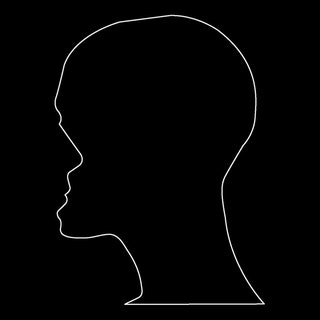
Nicolas Jaar – CENIZAS
Favorite Tracks: “Cenizas,” “Agosto,” “Mud,” “Sunder,” “Hello, Chain,” “Faith Made Of Silk”
Nicolas Jaar is clearly a student of the Rich Homie Quan school of refusing to ever stop going in, and in 2020 the Chilean electronic producer had one of his most prolific years to date, releasing his second album as Against All Logic, a DARKSIDE live album from 2014 (with teases of new DARKSIDE material on the way), and not one, but two full-length solo projects: CENIZAS and TELAS. All of this 2020 material is as strange, exhilarating, and boundary-pushing as we have come to expect from Jaar this many albums into his career, but CENIZAS especially stands out as the best of the bunch and one of the better releases in his discography as a whole. Despite being well familiar with Jaar’s music and his penchant for mind-bending sound design, every new Jaar release still manages to knock me on my ass with just how original his work is—you simply have never heard anything that sounds like some of the material on CENIZAS. Whether it’s his ability to take recognizable instruments and use them in bizarre new ways (like the woozy, dissonant saxophone on “Agosto”) or his ability to create abstract sounds that cannot for the life of me be traced to any recognizable instrument (namely whatever the hell is happening on “Menysid”), Jaar is constantly upending the listener’s expectations with his uncompromising sonic experiments that have unique a way of getting under your skin. But as challenging and strange as this record can be, especially at the beginning, the payoff of making it through those unsettling and hard-to-grasp moments is immense when you make it to the album’s most beautiful moments, like the ghostly choir vocals on “Hello, Chain” or the cascading ambient pianos of “Garden.” These songs are some of the finest ambient music of Jaar’s career when listened to as individual tracks, but their emotional potency is so much more intense in context of the full album. It’s not surprising that this record was created entirely in isolation, with Jaar recording the whole thing while holed up in a remote studio by himself before the pandemic had even started, as the dark, imposing atmosphere of many of these tracks feels remarkably appropriate for the world they were unexpectedly released into in late March. This album is a grower, even by Nicolas Jaar’s standards, but there were few albums this year I felt more rewarded by giving my time and attention to than CENIZAS.

Imagine Drowning – STAIN LICKER
Favorite Tracks: “Peroxide,” “Grit,” “Con,” “Wither,” “Ener,” “Arepo,” “Masks”
I’m sure as you read through this list and arrive at this entry you might be asking yourself: “Who the hell is Imagine Drowning? What the hell is STAIN LICKER??” And bizarrely, even after doing extensive research, I have about as much relevant information pertaining to the answer to this question as you do. The only reason I even encountered the music of Imagine Drowning in the first place was by stumbling into STAIN LICKER on Spotify through its relatively high profile features, namely the two collaborations with legendary Canadian ambient artist Tim Hecker, but from there trying to find any kind of lead on who the artist behind this mysterious project is a somewhat futile. The official Twitter account of Imagine Drowning has only 13 followers and barely any tweets, the Bandcamp page is completely devoid of personal info or any sort of bio, and trying to deduce how the hell this anonymous artist with no name recognition or press buzz managed to land features from some really big name ambient and indie artists like Tim Hecker, Grouper, and Giles Corey is an impossible task. Because of this air of mystery around the project and the consistent quality of the many Imagine Drowning releases this year, some have speculated that this project might be a pseudonym for a more famous producer, perhaps a project of Tim Hecker himself.
Whoever the artist behind this project is, the only thing stranger and more fascinating than the mystery around the artist’s identity is the music itself, and STAIN LICKER is by far the biggest and most ambitious Imagine Drowning release to date. While some ambient artists aim to create music that is as beautiful and peaceful as possible, others aim for something that is intentionally abrasive and unsettling. The 16 tracks of STAIN LICKER exist in the uncanny valley between those two extremes, often gorgeous in a traditional way, like the wispy and delicate collaboration with Grouper titled “Con,” but occasionally capturing an air of unease and uncertainty that can be hard to put your finger on until the album lurches forward into the center of the frame on more dissonant tracks like the first of the two Tim Hecker tracks, “Wither.” This push-and-pull tension between serene beauty and creeping dread is on full display in the album’s final track, “Masks,” a 12-minute epic that never lets the viewer settle into a sense of calm or relaxation. The sound of this track sometimes cuts off entirely without warning, passages slowly fade into the distance only to abruptly come back into the mix minutes later, and strange new ideas continue to introduce themselves until the track finally sputters to a halt. Uninterested in being fully ignorable like more traditional Eno-style ambient pieces, STAIN LICKER is ambient music that constantly keeps its listener on their heels without ever fully antagonizing them or testing their patience, existing in a dream-like purgatory state that is as hypnotic and entrancing as it is strange and ominous.
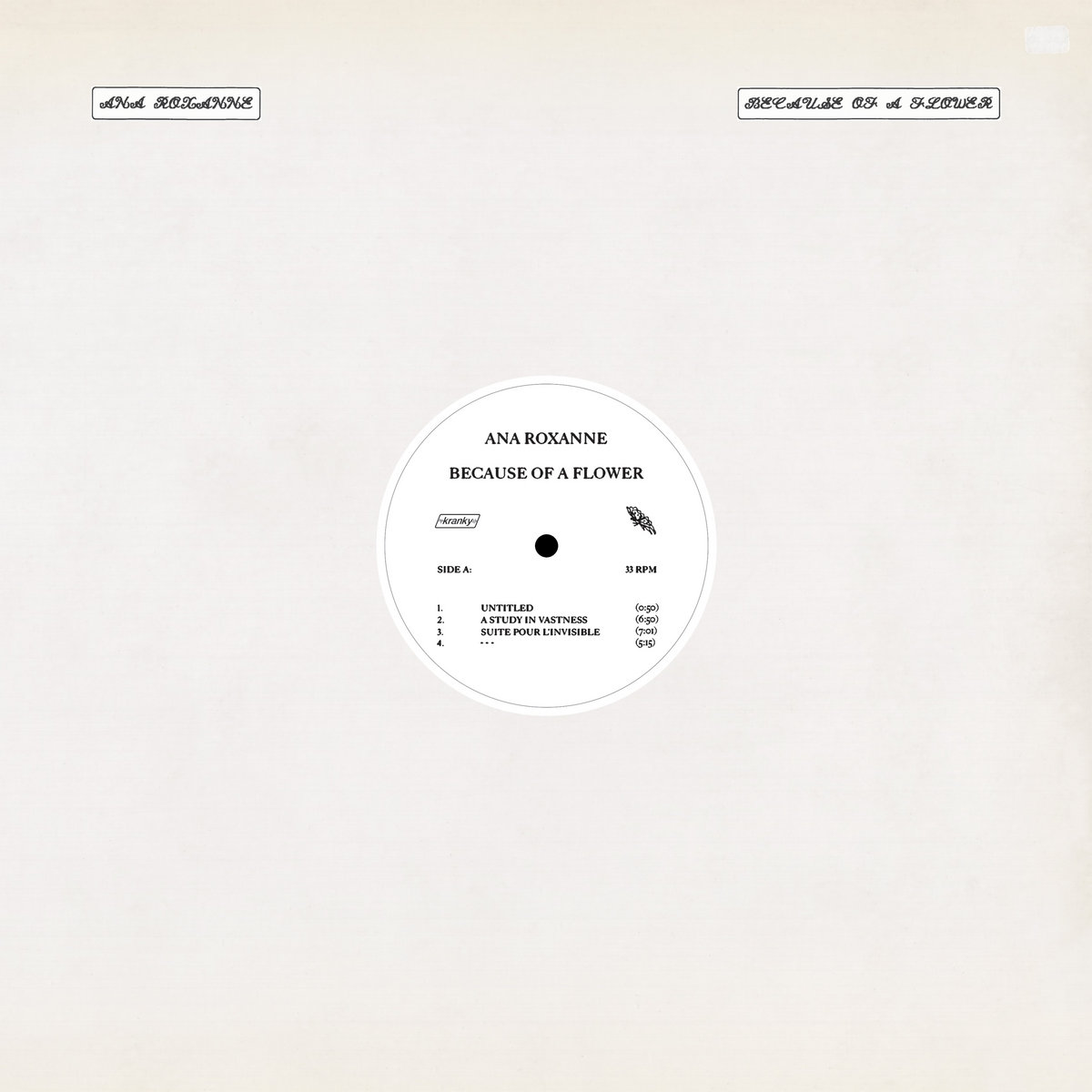
Ana Roxanne – BECAUSE OF A FLOWER
Favorite Tracks: “A Study In Vastness,” “Suite Pour L’Invisible,” “Camille,” “Take The Thorn, Leave The Rose”
Tracks with sung vocals and spoken word lyrics are sometimes not considered ambient music under a rigid, traditionalist definition of the usually strictly instrumental genre, but artists like Grouper, Julianna Barwick, and Ana Roxanne cleverly challenge that notion by using the human voice as a building block to create soundscapes that are are as personal and emotional as they are relaxing to listen to. The stunning new full-length debut from Ana Roxanne, BECAUSE OF A FLOWER, is a perfect example of that principle in action, as she uses her singing and speaking voice in a number of different, creatively inspired ways throughout the album’s seven tracks that manage to push the boundaries of ambient music while also staying true to the genre’s goal of creating music that is more focused on atmosphere than traditional songwriting.
The overall structure of the album weirdly reminds me of an sedated version of the Talking Heads concert film STOP MAKING SENSE, which famously introduces members of the band one by one as the set progresses in order to draw the listeners attention to each new instrument and how it interplays with the ones introduced previously. BECAUSE OF A FLOWER begins with Roxanne’s voice alone, much like how David Byrne walks out alone on stage, as her speaking voice quickly begins doubling and tripling over itself and being manipulated into different registers as she reads an introductory mantra: “Yin, the female principle, and yang, the male principle… have joined, and out of their junction has come a third: harmony.” Roxanne sets the stage in this way, not only to introduce you to the themes of identity and gender further explored within the record on tracks like “Venus,” but also to prepare you for the studio trickery she will immediately begin employing to manipulate her voice as an instrument all its own. The second track, “A Study in Vastness,” does exactly this, using multiple layers of wordless vocal loops stacked on top of each other to create a choral ambient piece entirely composed of her singing voice that is so breathtaking and dynamic that I would have sworn that there was some sort of synthesizer being used here if I didn’t know any better. When other instruments work their way into the picture like the introduction of synthesizer on “Suite Pour L’Invisible,” the subtle drum machine beat on “Camille,” or the brooding electric guitar and bass on “Take The Thorn, Leave The Rose,” each one of these new elements is blended seamlessly into the sonic textures of the tracks that came before it, creating an overall flow for the record that feels remarkably cohesive for how many new ideas it manages to incorporate from track to track. While each one of these tracks is a lovely little piece unto itself, hearing these new ideas and expanding sonic palettes unfold in succession gives BECAUSE A FLOWER a cinematic sense of forward momentum and purpose that is rare among ambient albums, all while staying true to the ethereal nature of the genre’s origins.
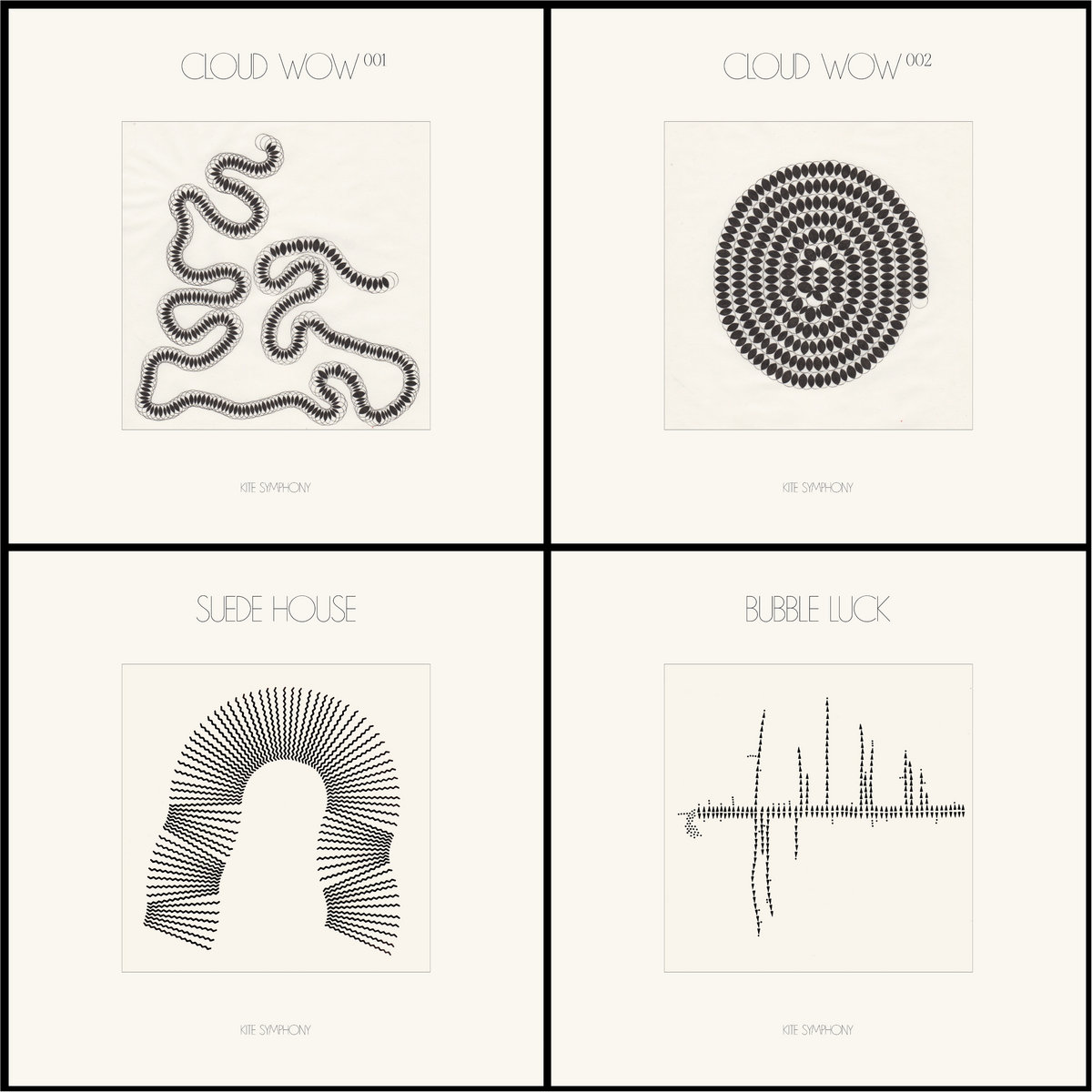
Roberto Carlos Lange – KITE SYMPHONY, FOUR VARIATIONS
Favorite Tracks: “Bubble Luck,” “Cloud Wow 002,” “Suede House”
The transportative nature of ambient music as a genre has led to many ambient albums that are about trying to take you to a very particular place, but KITE SYMPHONY, FOUR VARIATIONS is the rare ambient album that feels like it was not only inspired by a particular location but feels like it was born out of the very air and dirt of the place that it was recorded in. The collaborative work of musician Roberto Carlos Lange (better known by his stage moniker Helado Negro) and visual artist Kristi Sword, KITE SYMPHONY, FOUR VARIATIONS is a multi-media art project born out of what was supposed to be a quick three-week trip to Marfa, TX that extended into a three-month residency when the pandemic hit and the pair decided to hunker down in the small West Texas town that served as the inspiration for this project. With a population of barely 2000 people, Marfa has an outsized cultural footprint in the art world; its expansive blue skies and wide open terrain have become a popular canvas for modern artists ever since minimalist artist Donald Judd moved to the town in the early 1970s to take advantage of the open areas to build room-sized art installations that he had no space for in New York City. This unique new multi-media endeavor in the lineage of Marfa-based art projects of the past combines ambient music with reflective kite sculptures and video art that “explores the landscape of Chihuahuan Desert through wind, sound, and light.” I highly recommend watching the video art pieces that accompany standout tracks “Cloud Wow 002” and “Suede House” to get the full effect of the music that was crafted in conjunction with the visual components of the piece, but even when enjoyed on its own, the ambient music contained in KITE SYMPHONY, FOUR VARIATIONS is some of the very best music I heard in all 2020.
Joining forces with electro-acoustic composer Rob Mazurek and violist Jeanann Dara, the music of KITE SYMPHONY is an impressionistic suite of ever-evolving music divided into four parts that “invites the listener to open their ears to the sky, the sound of cacti, and the feeling of the wind on their skin.” Each song cycles through a number of different movements and motifs in incredibly fluid fashion, blending gorgeous melodic components with strange electro-acoustic textures and field recordings that capture the ambient nature sounds and gently blowing breeze of the wide open Marfa landscapes. Adding a bed of nature sounds to an ambient track can be the cheapest possible way to create a tangible sense of place when deployed lazily, but on KITE SYMPHONY these recordings blend so effortlessly with the collage of other sounds in a clever way that effectively blurs the line between the more abstract, impressionistic elements of the piece with the real sonic textures found in nature that served as the inspiration for Lange and Sword. It can sometimes be difficult to tell where the recorded sound from on the ground in Marfa ends and the production flourishes from the artists begin, until moments like the end of “Cloud Wow 002” when the electronic components slowly fade away and the listener is left with just the sounds of chirping crickets and a dog barking somewhere off in the distance. If you feel trapped inside your cramped bedroom, wishing you could be transported to some more peaceful place rather than continue to reflect on the stressful reality of life in 2020, I’ve found that putting on KITE SYMPHONY, FOUR VARIATIONS and allowing yourself to imagine the warm Marfa air on your skin is the closest thing to teleportation that music is able to offer.
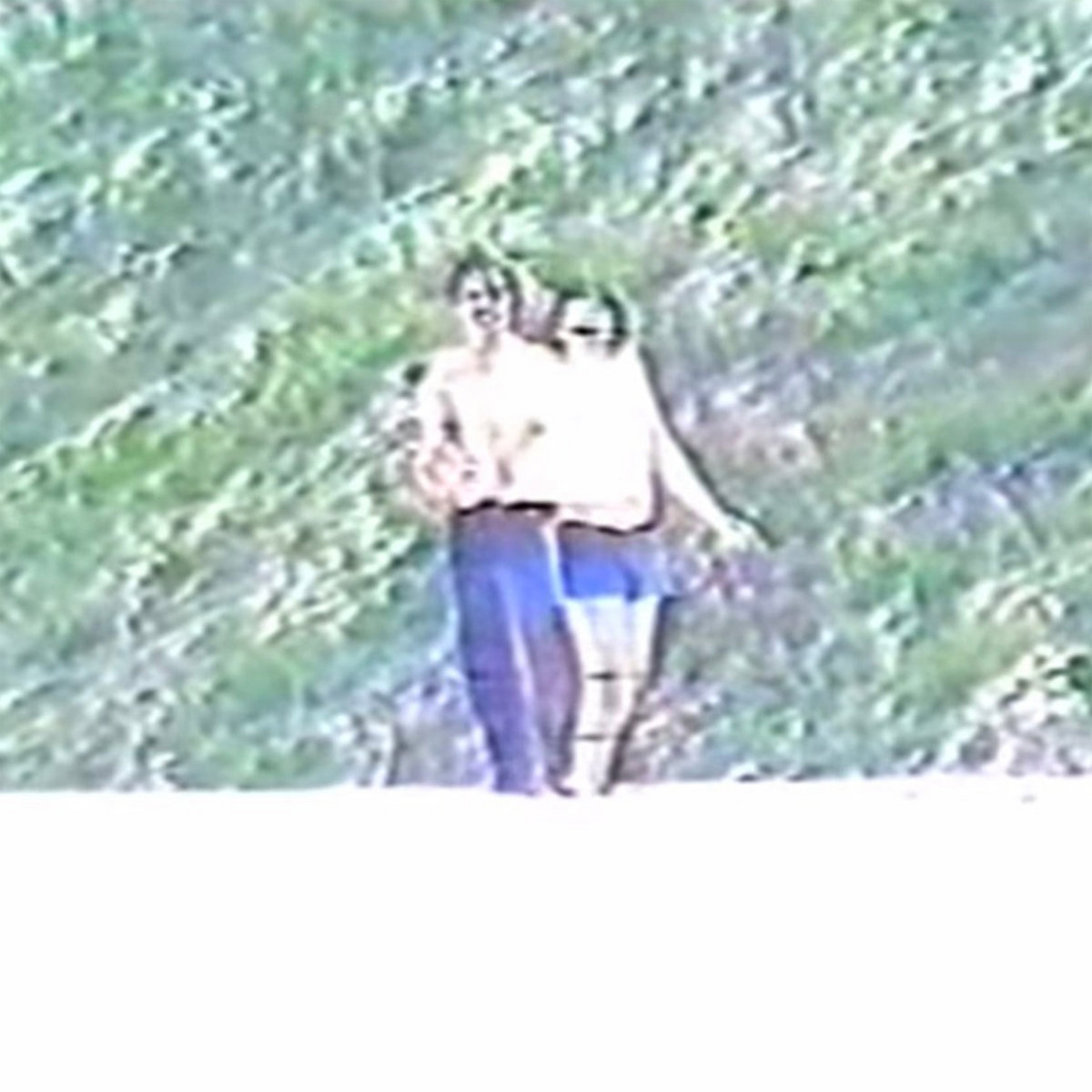
Khotin – FINDS YOU WELL
Favorite Tracks: “Ivory Tower,” “Heavyball,” “Outside In The Light,” “WEM Lagoon Jump,” “Your Favorite Building,” “My Toan”
I was debating whether or not to include FINDS YOU WELL on this list, not because I don’t love it as much as the other selections here, but because it exists in a unique grey area between traditional ambient music and downtempo house music that can be hard to classify. Khotin splits his musical focus between his club-oriented EPs, like the excellent DREAM MENTOR EP he just dropped just last week, and his ambient full-length projects, like 2019’s BEAUTIFUL YOU, which shift down to a much slower tempo and focus on the Edmonton-born producer’s natural penchant for dreamy atmosphere and wistful melodies. FINDS YOU WELL seems to be an attempt to find the exact midpoint between these two styles, with about half of the tracks here utilizing some kind of beat and the other half forgoing percussion entirely. While some might find that this album’s occasional use of drums might be a little too forceful for the genre that Brian Eno famously declared should “be able to accommodate many levels of listening attention without enforcing one in particular,” I find that the slowly shuffling beats of tracks like “Heavyball” and “Groove 32” don’t feel too disruptive or attention-grabbing as to fully declassify this album from the broad category of ambient music. Tracks like “Your Favorite Building” utilize percussion in much more subtle ways, allowing the ambience created by layers of synthesizer and piano chords to remain in the center of the listener’s attention, the incredibly understated kick drums and clicks underneath the melodies acting as a gentle, barely noticeable heartbeat for the track. However you choose to classify this album, it’s impossible to deny that it has a unique and creative approach to chilled-out electronic music, not content to take the laziest route to a Spotify chill vibes playlist. While clearly indebted to forebearers like Boards of Canada, Khotin has managed to carve out a niche within the larger world of slow-moving electronic music that is all his own, and FINDS YOU WELL is the fullest realization of his sound to date.
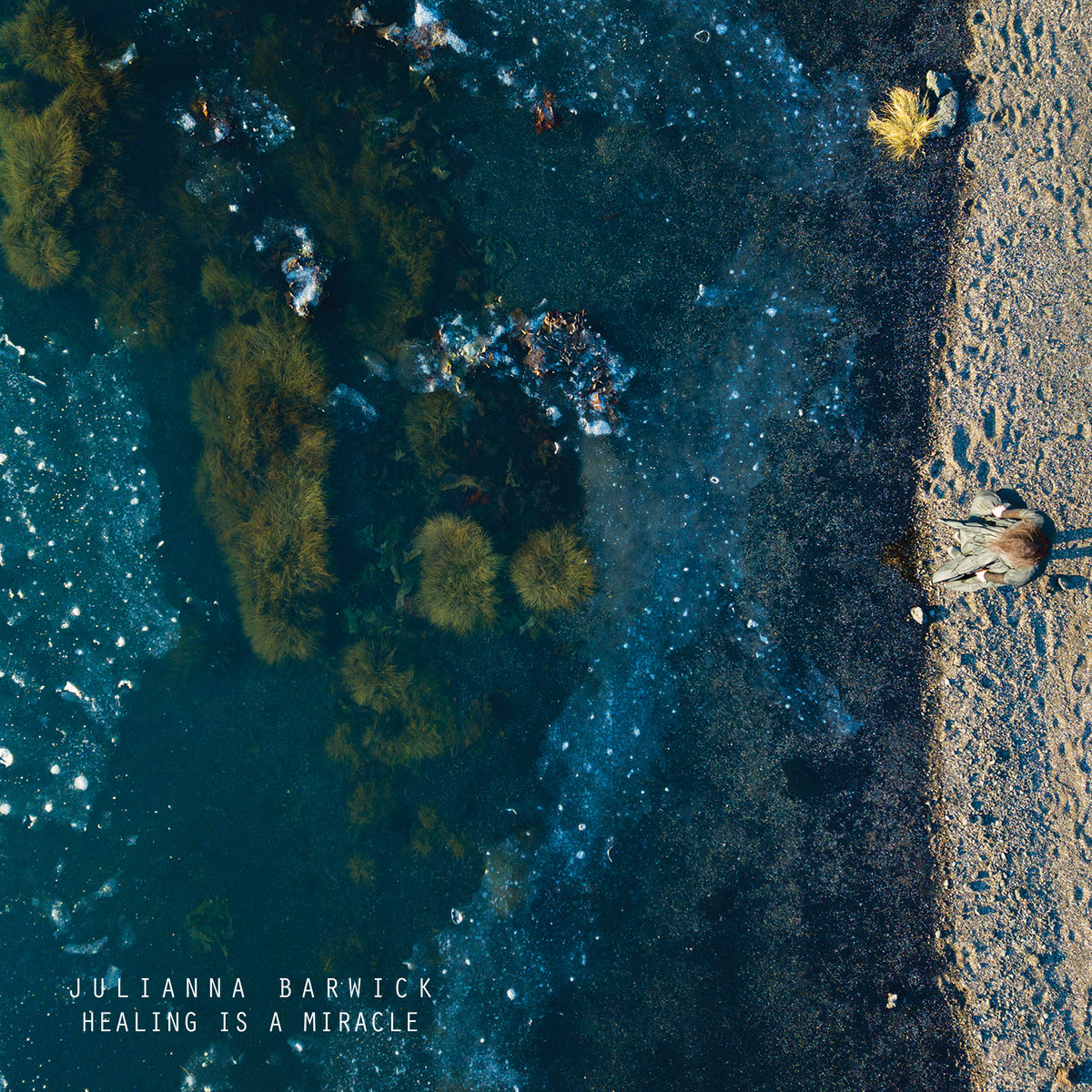
Julianna Barwick – HEALING IS A MIRACLE
Favorite Tracks: “Inspirit,” “Oh, Memory,” “Healing is A Miracle,” “Safe,” “Wishing Well,” “Nod”
When writing about music that is as otherworldly as the work of someone like Julianna Barwick, it can be easy to ascribe a fantastical narrative on to the music to make sense of the strange beauty it possesses. But as Barwick has joked about in interviews, just because she makes delicate, airy ambient music centered around layers of her heavenly singing voice, she is not in fact “some kind of gentle fairy creature” or “some weird lady who lives in a tree or something.” Juliana Barwick is indeed a real person, and we don’t need to pretend she’s some kind of magic woodland nymph in order to appreciate her music, even if it’s easy to do so with something as beguiling and magically restorative as her newest album HEALING IS A MIRACLE. Growing up singing in choir groups as a child, Barwick has always been obsessed with harnessing the power of the human voice as a one-of-a-kind musical tool from a very young age, so much so that her sister once had to tell her to “Stop harmonizing with everything!” because she would do it so often. Thank goodness she kept doing it anyways, because those years of practice singing anywhere and everywhere she could (including public bathrooms and stairwells that had particularly good acoustics) helped tune her natural instrument into something that can shapeshift and transform into a whole orchestra worth of sounds when combined with a loop pedal and a bit of studio magic. It really is a small miracle that the human body can come into the world naturally able to produce a tone that beautiful, and on HEALING IS A MIRACLE the soothing, transportative powers of her voice have never been more front and center. As she has incorporated a wider instrumental palette over the course of her career and opened up her songwriting process to collaborations, including excellent features here from Mary Lattimore, Nosaj Thing, and Jonsí from Sigur Ros, her voice has remained the beating heart of her music, and HEALING IS A MIRACLE manages to feel more expansive and maximalist than any of her previous releases while also maintaining that sense of intimacy and gentleness that has always defined her music.


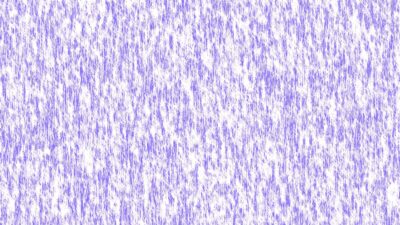
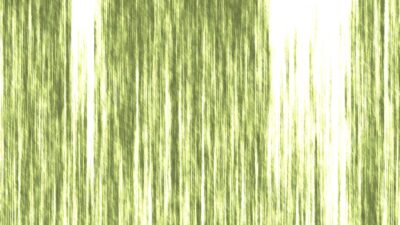
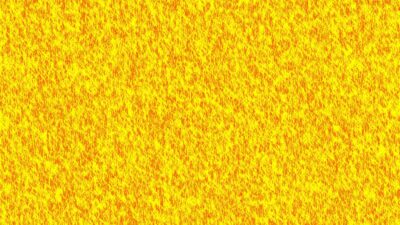




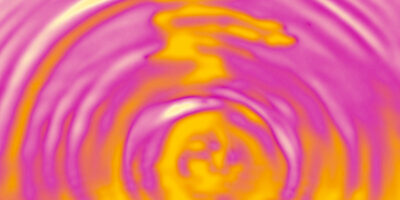



Comments